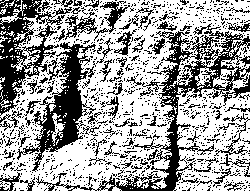
In Egypt, mud bricks were made of Nile mud, a mixture of clay and sand, sometimes mixed with bits of straw or animal droppings. This was mixed with water to form a malleable mass and then pressed into moulds. These moulds, of which we have some actual examples as well as miniature models, were rectangular with an open top and bottom. The lump of clay was then left in the sun to dry. Very occasionally, and mainly in the Roman period, the mud bricks were also baked in a kiln. The making of mud bricks is illustrated in models from the Middle Kingdom and on tomb walls. Most of the mud bricks made in this way were a handy size, but mud bricks of up to a meter in length have also been found. The oldest mud bricks have been found in tombs dating from the Predynastic Period at Naqada and in royal tombs at Abydos. Tombs from the 1st and 2nd Dynasties at Saqqara and Abydos are also constructed of mud brick. A mud brick fortification was built at Abydos in the 2nd Dynasty, the walls of which were more than ten meters high. The Middle Kingdom pyramids were also partly built of mud brick. Even when stone was readily available as a building material for tombs and temples, mud brick continued to be used to build houses and palaces.